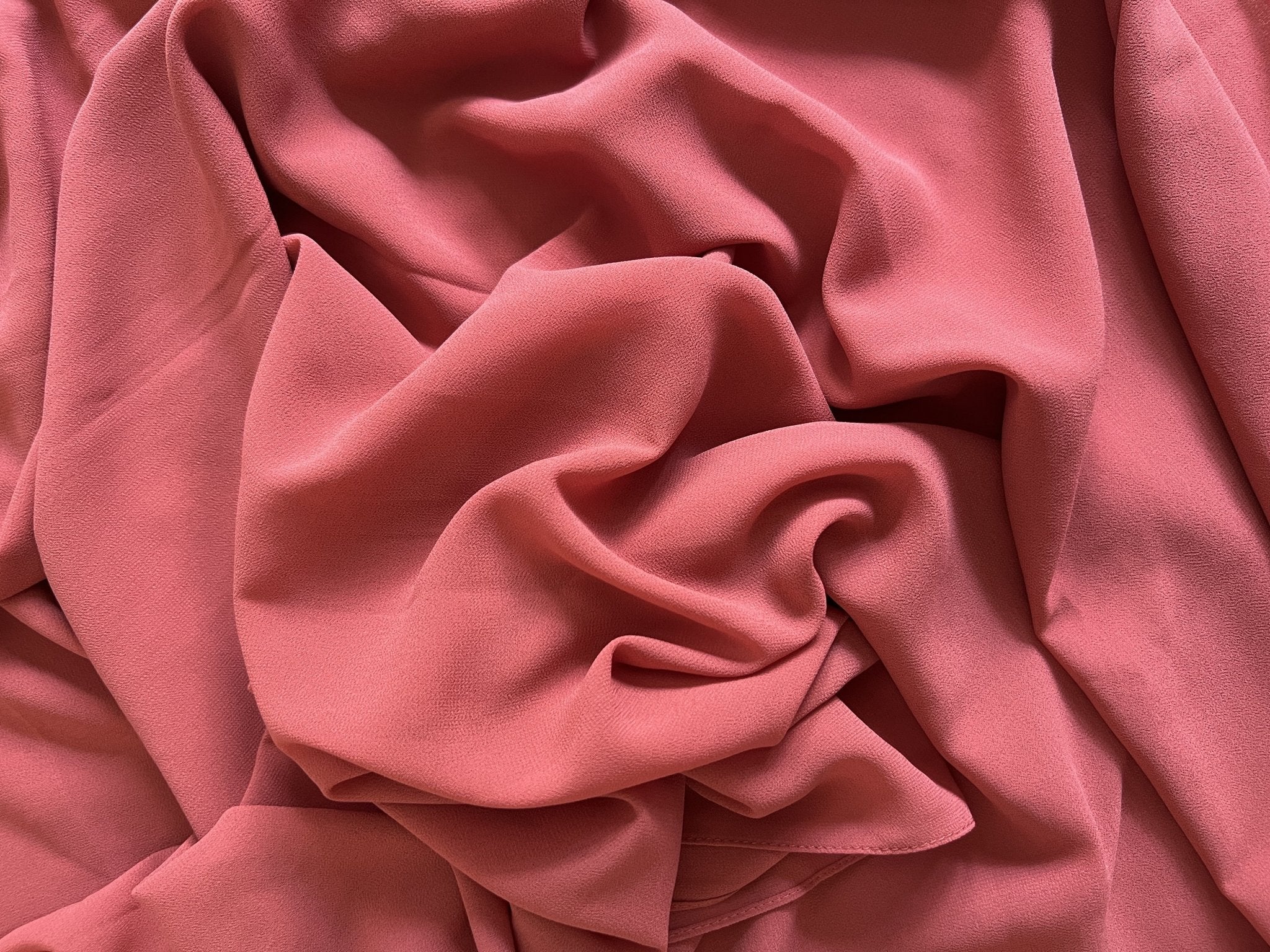
Unlock the Secrets to Long-Lasting Hijabs
Essential Tips for Proper Hijab Care
Wardrobe essential for millions of Muslim women, the hijab is not only a symbol of modesty but also a versatile fashion accessory. However, keeping hijabs in optimal condition can be challenging without proper care. That's why we've compiled a comprehensive guide to help you unlock the secrets to long-lasting hijabs.
In this article, we'll share essential tips and tricks for maintaining the quality and longevity of your hijabs. From choosing the right fabrics to washing and storage techniques, we'll cover it all.
Discover the dos and don'ts of hijab care, learn how to remove stains effectively, and explore innovative hacks to maintain the vibrant colors and delicate textures of your hijabs. Whether you're a seasoned hijabi or new to wearing a hijab, these expert-backed tips will revolutionize the way you care for your collection.
Investing in high-quality hijabs is only half the battle; proper care is equally important to ensure they stand the test of time. So, join us as we unveil the secrets to long-lasting hijabs and elevate your hijab game like never before.
The importance of proper hijab care
Proper hijab care is essential to maintain the quality and longevity of your hijabs. By following a few simple steps, you can ensure that your hijabs stay looking fresh and vibrant for longer.
Many factors, such as fabric type, washing techniques, and storage methods, can affect the lifespan of your hijabs. Taking care of them will not only save you money in the long run but also help you make a positive environmental impact.
Understanding the Different Types of Hijab Fabrics
Hijabs come in a wide variety of fabrics, each with its own unique characteristics and care needs. Cotton, chiffon, silk, jersey, rayon and viscose are some of the most common fabric types used for hijabs. Understanding the properties of these fabrics will help you choose the right care routine for each hijab in your collection.
Cotton hijabs are durable and easy to care for. They can generally be machine-washed. Chiffon hijabs, on the other hand, are delicate and require more gentle handling. Hand-washing or using a delicate cycle in the washing machine is recommended for chiffon hijabs. Silk hijabs should always be hand-washed or dry-cleaned to maintain their luxurious feel. Jersey and viscose hijabs are often machine-washable but may require extra care to prevent stretching.
Washing and Drying Hijabs Correctly
Proper washing and drying techniques are crucial for maintaining the quality of your hijabs. Always check the care instructions on the hijab label before washing. Most cotton hijabs can be machine-washed on a gentle cycle using mild detergent. Avoid using harsh chemicals or bleach, as they can damage the fabric and cause colors to fade. It's best to air-dry cotton hijabs to prevent shrinking.
For delicate fabrics like chiffon and silk, hand-washing is recommended. Fill a basin with lukewarm water and add a small amount of gentle detergent. Gently swirl the hijab in the water, being careful not to rub or wring it. Rinse thoroughly and squeeze out excess water without twisting or stretching the fabric. Lay the hijab flat on a clean towel and roll it up to absorb moisture. Then, lay it flat to air-dry.
Storing Hijabs to Maintain Their Quality
Proper storage is key to preserving the quality of your hijabs. Avoid hanging them, as this can cause stretching and distortion. Instead, fold them neatly and store them in a drawer or a storage box. To keep your hijabs organized, you can use dividers or separate them by color or fabric type. If you have limited space, consider using a hanging organizer with pockets to store your hijabs vertically.
To prevent wrinkles, you can roll your hijabs instead of folding them. This method also helps save space and makes it easier to find the hijab you want to wear. Avoid storing your hijabs in direct sunlight or in places with high humidity, as this can lead to color fading and fabric damage.
Removing Stains from Hijabs
Accidents happen, and stains can sometimes find their way onto your hijabs. However, with the right techniques, you can effectively remove stains without damaging the fabric. The key is to act quickly and avoid rubbing the stain, as this can spread it further.
For oil-based stains, such as makeup or food grease, sprinkle some talcum powder or cornstarch on the stain and let it sit for a few minutes to absorb the oil. Gently brush off the powder and blot the stain with a clean cloth or paper towel. For water-based stains, like coffee or juice, rinse the stain under cold water immediately. Then, apply a small amount of mild detergent or stain remover and gently rub the fabric together. Rinse thoroughly and air-dry.
Ironing and Steaming Hijabs Without Damaging Them
Ironing and steaming your hijabs can help remove wrinkles and creases, giving them a fresh and polished look. However, it's important to use the right techniques to avoid damaging the fabric.
Before ironing, always check the care label to determine the appropriate temperature setting for your hijab's fabric. If in doubt, start with a low heat setting and gradually increase it if needed. To prevent direct contact between the iron and the hijab, place a thin cotton cloth or a pressing cloth on top of the hijab before ironing. This will protect the fabric from heat damage. Gently press the iron on the cloth, moving it in smooth motions to remove wrinkles.
If you prefer steaming, invest in a handheld steamer. Hold the steamer a few inches away from the hijab and move it up and down to release the steam. Be careful not to steam too close or for too long, as excessive heat or moisture can damage delicate fabrics.
Tips for Preventing Hijab Pilling and Fraying
Pilling and fraying are common issues that can affect the appearance and longevity of your hijabs. Pilling occurs when loose fibers on the fabric surface become tangled and form small balls or fuzz. Fraying, on the other hand, happens when the fabric edges start to unravel.
To prevent pilling, avoid wearing rough-textured or abrasive fabrics with your hijabs, as they can cause friction and lead to pilling. Additionally, wash your hijabs inside out to minimize friction during the washing process. If you notice any pills, gently remove them using a fabric shaver or a pilling comb.
To prevent fraying, trim any loose threads or frayed edges as soon as you notice them. You can use a small pair of scissors or a fabric glue specifically designed for hemming to secure the edges and prevent further fraying.
How to Maintain the Shape and Structure of Hijabs
Maintaining the shape and structure of your hijabs is crucial for a polished and put-together look. Different hijab styles require different techniques to achieve the desired shape and drape.
For rectangular hijabs, folding them lengthwise and wrapping them around your head can help create a neat and structured look. You can also use hijab pins or magnets to secure the folds in place. For square hijabs, try folding them into a triangle shape and then wrapping them around your head. This creates a more voluminous and stylish look.
If you prefer a more relaxed and casual style, opt for jersey or viscose hijabs, as they are naturally stretchy and easy to shape. Experiment with different styles and techniques to find what works best for you.
DIY Hijab Care Solutions and Hacks
In addition to the essential tips mentioned above, there are several DIY hijab care solutions and hacks that can help you maintain the quality of your hijabs.
To remove wrinkles without ironing, hang your hijab in the bathroom while taking a hot shower. The steam will help relax the fabric and smooth out the wrinkles. For quick stain removal, apply a small amount of dish soap directly to the stain, gently rub it in, and rinse with cold water. Dish soap is effective in breaking down oil-based stains.
To freshen up your hijabs between washes, create a DIY fabric refresher spray by mixing equal parts water and fabric softener in a spray bottle. Lightly mist your hijabs and hang them to air-dry. This will help remove odors and keep your hijabs smelling fresh.
Conclusion: Embracing Proper Hijab Care for Long-Lasting Wear
Investing in high-quality hijabs is only half the battle; proper care is equally important to ensure they stand the test of time. By following the essential tips and tricks outlined in this guide, you can unlock the secrets to long-lasting hijabs and elevate your hijab game like never before. From understanding different fabric types to mastering washing, drying, and storage techniques, you now have the knowledge to care for your hijabs effectively.
Remember, taking care of your hijabs is not only about preserving their appearance but also about embracing the values they represent. By extending the lifespan of your hijabs, you contribute to a sustainable and eco-friendly fashion culture. So, let's embark on this journey of proper hijab care together and enjoy the beauty and versatility of our classic hijabs for years to come.



Leave a comment
This site is protected by hCaptcha and the hCaptcha Privacy Policy and Terms of Service apply.